Energy Economist: WTI / Brent Spread Falling - September 13, 2011
EnergyEconomist If you have trouble viewing the graphs in this report go to the on-line report
This report was several weeks in the making and will be published in two parts. We think it important to get the first part out before the release of the EIA data at 10:30 Eastern time. The return to a normal relation between WTI and Brent will be dependent upon new pipelines to the Gulf or the reversal of old ones which is more than a year away. The current spread between WTI and Brent is down to $21 from $28 a few days ago. It could easily go to $15 or even $10 in the short term. The report should show a major drop in crude stocks because of the impact of Tropical Storm Lee. If the overall drop is accompanied by a large decline in stocks at Cushing it should move in the direction of Brent and narrow dramatically. If not today, then soon.
Large volumes of oil are already either bypassing Cushing all together or moving from Cushing to Gulf Coast where the oil can be sold at world market prices rather than the depressed local price at Cushing. Often producers are resorting to trucks or barges to move the oil toward the Gulf to take advantage of higher prices. That cost is nearer $10 than $21 or the recent $28. That means WTI could rise over $10 relative to Brent at any time. Until there is more pipeline access to the Gulf WTI is expected to be at least $8-$10 less than Brent we do not expect it to stay above $20.
The Report (Part 1)
At the retail level gasoline and diesel prices are little below the record highs established in 2008. The most frequently asked question from the guy or gal on the street is: Why are gasoline prices a dollar more than last year when crude oil in only up $12 per barrel ($0.28 / gallon)? Number two on the list of questions: Why is Brent trading at a $26.87 premium to WTI on NYMEX? Number three comes from commodity traders: When will the price of WTI return to its normal premium to Brent? We look to answer all three questions.
The price of gasoline diverged from that of WTI. Gasoline spot prices have remained near $3.00 per gallon since April and were often above. Meanwhile the crude oil price fell from $115 this spring to $88.
Based on WTI the crack spread between oil and gasoline is $0.85 per gallon and is $0.89 for heating oil. Except during the period when refiners were revamping their refineries to produce RBOB gasoline when MTBE was phased out and again when the amount of sulfur allowed in diesel was reduced the spread between product prices and WTI typically ranged from $0.15 to $0.30 per gallon for both products. The spread for gasoline was at the high end in the summer and at the low end in the winter. The reverse was true for heating oil and diesel.
It turns out that the answer to both of our questions is about the same. WTI does not represent the international price of crude oil. In fact a glance at Brent in the graph below relative to WTI bears a striking similarity to the graphs of gasoline and heating oil relative to WTI.
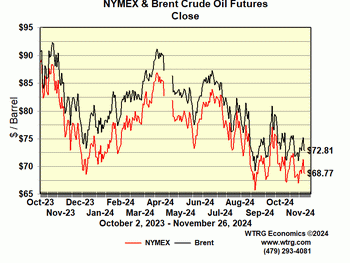
If we substitute Brent for WTI and compare this to US gasoline prices we see a normal relationship with normal price spreads.

The same is true of heating oil.

If your business is impacted by gasoline or distillate (diesel, heating oil) prices and you typically use WTI as an index of those prices in planning, then WTI has been giving false signals There are several marker prices for crude oil. The two most often cited are West Texas Intermediate and North Sea Brent. Both trade in futures markets that are very liquid, but these contracts are for physical delivery of crude oil. In the Case of WTI it is a NYMEX contract for 1,000 barrels to be delivered at Cushing, Oklahoma. If you buy a contract and hold until expiration somebody from NYMEX will be calling to arrange for delivery next month. Similarly for Brent with North Sea delivery.
A year ago WTI was priced at a small premium to Brent due to a slight quality advantage as well as the additional cost to move Brent to the U.S. Monday Brent was at a $26 premium to WTI. Monday, Brent closed at $112.25 and WTI closed at $88.19. However, that doesn't mean that all crude oil in the U.S. is at a similar discount. The spot price for Alaskan North Slope was $116.79 and Louisiana light Sweet was $118.89. In fact, virtually every crude stream worldwide is priced nearer to Brent than WTI. Since most oil still retains its normal relationship to Brent it is obvious that WTI is no longer representative of the world price of crude oil. The only exception is crude oil from Canada which is sold in the Midwest. That oil is priced relative to the price at Cushing.
One of the reasons WTI prices are depressed relative to other oil because stocks at Cushing remain higher than the level needed by the industry. The graph above the map shows the high stocks at Cushing (red) often coincide with Brent prices at a premium to WTI (black). The simplest explanation for the price differential is that high stocks at Cushing, Oklahoma (the delivery point for the NYMEX contract) exceed the needs of the refining industry served. The surplus depresses the local Cushing price relative to the rest of the world.
The reason is easily understood. The majority of the pipelines out of Cushing feed refineries in the Midwest. Those refineries only need 20 - 25 million barrels of stocks at Cushing to support their activities. New production reaching Cushing from North Dakota and Canada contributed to stocks at twice the level needed by the refining industry.
While Midwest refining has ranged between 3.0 and 3.5 million b/d for years and only needs 20 million barrels at Cushing. At times this year stocks were twice the level needed by industry.
Net shipments from the Gulf Coast into the Midwest region served by Cushing are down 50% since 2004 while oil production in the region and shipments from Canada are up sharply. This trend will continue. Until Canadian crude and oil from North Dakota have access to the Gulf Coast market WTI will trade below Brent, but not over $20 below.

Conclusion
Stocks at Cushing are not justified by current industry needs. That caused WTI to trade below the world market. We believe the market premium is too high by twice to be sustained. We could even be in for falling Brent and rising WTI but the spread should narrow to half.
The simplest explanation for the price differential between Brent and WTI is that high stocks at Cushing, Oklahoma (the delivery point for the NYMEX contract) exceed the needs of the refining industry served.

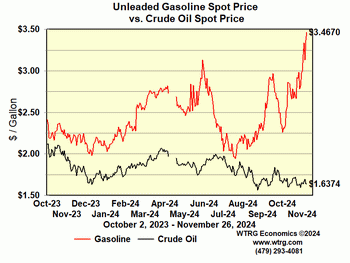
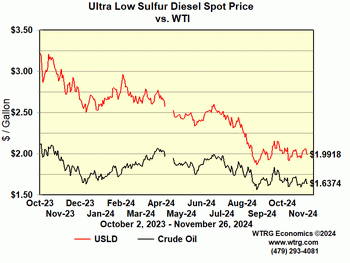
NYMEX Prices for September 13, 2011
NYMEX Light Sweet Crude +2.02
$90.21
ICE Brent -0.36
$111.89
RBOB Gasoline NY Harbor +0.0042
$2.7340
Heating Oil NY Harbor -0.0114
$2.9361
NYMEX Natural Gas +0.095
$3.980
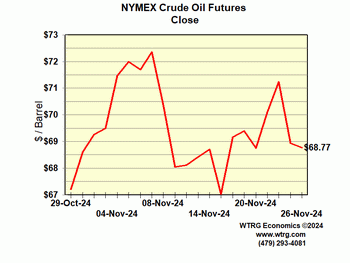
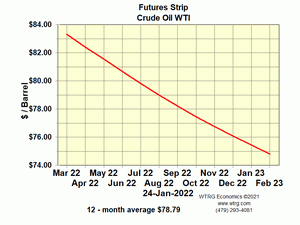
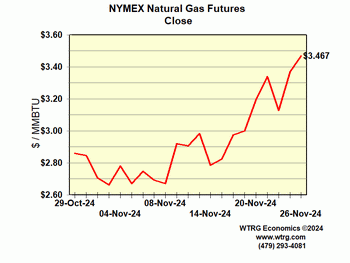
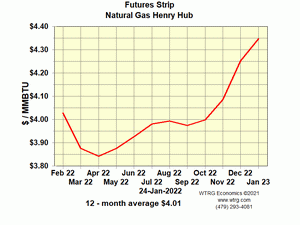



***************************************************************************
This is some more good work from James Willams but I don't agree with his conclusion here. I believe the current Brent/WTI spread is justified, because it has less to do with Cushing inventories than it has to do with OECD inventories. OECD inventories are down to '08 levels, mostly due to Libyan oil being off the market. As shown by one of the charts above*** (which is from the recent EIA TWIP on this subject), Cushing inventories have now come down to levels that would be consistent with there being virtually no spread between Brent and WTI, yet the large spread has persisted. So the old paradigm (that the Brent/WTI spread is dictated solely by Cushing inventory levels) needs to now be discarded or at least further refined (pun intended!).
*** See last chart before conclusion, click on it to enlarge it in a popup window |
















